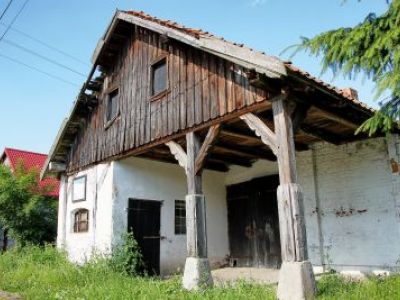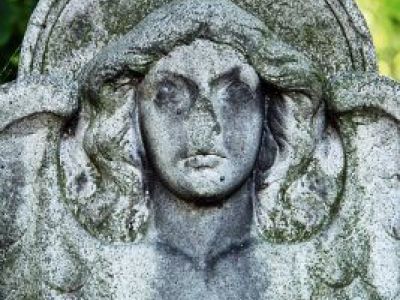Miasto i Gmina Gniew
Menu witryny
Treść strony
Wielkie Walichnowy
The village located in the Valley of the Vistula River on the Lowland of Walichnowy. It appeared for the first time in the written sources in 1399 as Valkenow, as Walichnowy in 1624. The town and the parish were founded in the XIV century by the Teutonic Knights. The church located here, of St. John the Baptist, which contains the parts of the Gothic church of the XIV century, was rebuilt after the fire in the XVII century.
Most of the equipment dates from the XVII century. The medieval metric is only owned by the stoup located in the porch of the temple. In 2014, on the initiative of Mariusz Śledź, a long-term headmaster of the Primary School in Małe Walichnowy, a plaque was installed in the church, which informs about the floods, which struck the Lowlands in the past centuries.
Right next to the church there is a historic arcaded forge from the middle of the XIX century. In the village there are also many other objects of equally long history. The thing that distinguishes it are also the tables set in four sides of the world, which are a replica of the tables set in Wielkie Walichnowy at the beginning of the XVIII century by the parish priest Marcin Szela, the author of the “Chronicles of Walichnowy” (two-volume work, which recounts the history of the Lowlands in the years of 1693–1728). Tables of f. Szela are a kind of spells, which are to protect the village from disasters, as each of them contains a request for care.
The picturesque region extending along the Vistula bank from the village of Ciepłe in the municipality of Gniew to the village of Rybaki in the municipality of Subkowy – the Lowland of Walichnowy – has taken its name from Walichnowy Wielkie. For centuries, every spring, often also in summer, the inhabitants of these lands had to defend against flood. Their effort has not always been effective, and then the water would take their belongings, and sometimes also the life. However, these people have stubbornly, with determination and great diligence taken piece by piece their place to live from the Vistula. Builders, who were especially meritorious for the Lowlands, who have created the hydraulic and engineering system in this area, included the Mennonites from the Netherlands, and among them the family of Dirksens, who has done the most to tame the Vistula River with their work and ideas. The only trace of the stay of the Mennonites in Wielkie Walichnowy includes the cemetery with the original shape of tombstones from the XVIII, XIX and XX century.
Polecamy
Dofinansowanie
Strona sfinansowana została ze środków Ministerstwa Administracji i Cyfryzacji, w ramach konkursu na budowę strony internetowej oraz dostosowanie jej do potrzeb osób niepełnosprawnych.
Kontakt

Urząd Miasta i Gminy Gniew
Plac Grunwaldzki 1, 83-140 Gniew
pon., wt., czw. 7.30-15.30
śr. 7.30-17.00
pt. 7.30-14.00
tel. 58 530 79 19;
fax 58 530 79 40
e-mail: sekretariat@gniew.pl
DANE DO FAKTURY
Gmina Gniew
NIP 593 10 05 516
REGON 191675296
Adres Elektronicznej Skrzynki Podawczej: /34gu04waml/skrytka






























